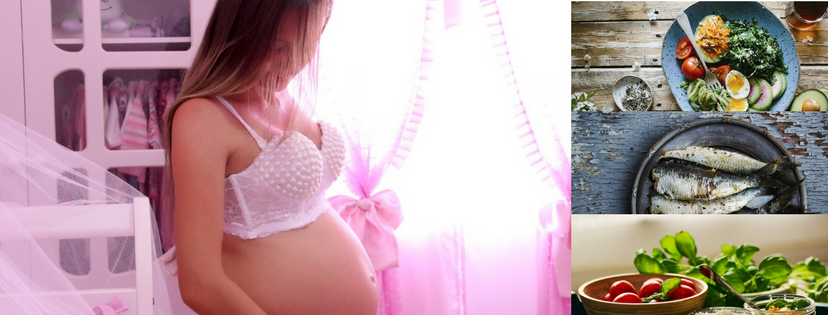Many years ago I was asking this same question, “But what do I do?” and “Who is going to help me?”
Like so many others, I know all too well about having a chronic health condition and living with that daily.
Yes, I too have a chronic disease state and I also know what it is like to live in that chronic disease state. That is why I understand what many of you go through daily. I may not know what it is like to live with your disease state, but I know what it feels like to live in chronic disease state and have to live with the consequences of that disease.
I also know what it is like sitting there thinking that nobody seems to be able to help me and one seems to be getting nowhere with this. Then the vicious cycle of then doing nothing, because one believes that nothing works and nobody can help, and then nothing gets done and the symptoms continue and then you get even more and more frustrated.
Yes, I have been there too. This is why I do what I do now and why I want to help others get out of their rut, and help them overcome their disease and learn to manage their disease better to then have a better life.
But unlike many others, I do know the power of positivity and know that once I put my mind to something and commit to it, then I’ll do as best I can and it also helps get the process going. I also know that in order for something to change, that I also had to be proactive and make things change. It is that old saying “If you don’t change anything, then nothing changes”
So one day I sat down and said “Right, let’s just forget about whom I have been seeing, forget the blame game etc and let’s just really look at this objectively. What do (I) need to do to create a change?” and “Can I do all these changes on my own?”
Sometimes asking these sorts of questions about yourself can be quite confronting and when you do, you also need to be completely honest with yourself and have those around you be honest with you also.
Then you have to take that advice, listen to what people are saying and then go about finding someone to help you and then actually make the necessary changes that are needed. But, finding someone to help can be really hard too.
Like every other profession, or industry, or workplace etc, there are good and bad people in what they do. Unfortunately finding the good people to help can often be hard, but it doesn’t mean they are not out there.
There are good people out there, and people who are excellent at what they do, but it also means not being sceptical and also having an open mind, otherwise you will just give up and not do anything again. Then you end up being in the vicious ‘poor me’ cycle again and that isn’t going to help anyone. This is where a good counsellor or psychologist can help and be impartial and be objective in what you need to do to move forward.
Then I also learnt that I had to stop the blame game and had to learn to stop making excuses. I know all too well that it was much as it is easy to blame others and blame things for not working, but at the end of the day we are all in charge of our own health, our own lives and what happens to our body too.
Well, to a point anyway. I do know that sometimes you just can’t help genetics and hereditary disease, but at the same time, these disease states can be managed “If” you get proper care.
I remember a good friend sitting me down and talking to me about what I should do and also some of the questions this friend asked me. Some of the things he said to me and insights he shared with me were things like these.
- “Are the people you are seeing good at what they do?”
- “Have you noticed any changes after the treatments they have prescribed?”
- “How long have you been seeing these people for?”
- “What are your expectations around the treatments they have prescribed for you?”
- “Have you actually been doing the treatments they have prescribed”
- “Have you been taking the prescribed treatments and advice seriously and doing it properly?”
This friend of mine said to sit there for a minute or so and really reflect on what he was asking and be completely honest with myself.
He said to me “You know how some people come to see you and then they go away and then don’t take on any of the recommended changes and don’t do the treatments and then expect for things to miraculously changes and you to somehow just fix them without them having to do anything….. are you one of those people too?”
Not something I wanted to hear, but I did appreciate the honesty. I could relate to what he was saying because if one doesn’t do the necessary recommendation, or do the treatment, then one isn’t going to get better and then you can’t blame the person you are seeing if it all goes pear shaped.
Then he said to me “You can’t keep doing the same thing over and over again. If it isn’t working, you can’t then expect a different outcome each time, or just hope that all of a sudden it works.”
He then went on to say “I’ll put it to you this way. If you keep running into a brick wall and then it hurts and you fall over and then get back up again and try to do it again thinking it might not hurt this time, and expect a different outcome, when you know it is going to hurt, then you need to start asking yourself some serious questions”
Then he said to me “Let’s really look at expectation versus reality. You have had this disease state for a really long time, but in your own mind you want it fixed straight away, or after a few days, or after a few weeks. The thing is… it isn’t going to happen.”
He then continued “You know all too well that if you have had a disease state for years it isn’t going to fix overnight and that it is going to take months, or may even take a year or more to fully get on top of it, depending on the severity and what is going on”
This friend also said to me “Sometimes pain levels and symptom and all a matter of expectation versus reality too. Sometimes you think you aren’t getting better, when in fact you actually are. If someone where monitoring you properly you may have started out at 10/10 pain and may now be 5/10, which is an improvement. But, because you are still in pain, you won’t see it as such until someone points out the difference. It is all relative to what you believe versus what is actually happening ”
Lastly he then put it rather bluntly to me “Who the bloody hell have you been seeing and are they any good?” then he added “Because we all know there are people out there you wouldn’t send your dog to and the good ones are few and far between. Btw, who sent you there in the first place?”
He then added one more thing in “You can’t try and do this yourself, or try and treat yourself because that isn’t going to work and this is not your area of expertise. Go and see someone for advice and help and don’t be like many others and try and (Dr Google), or try and self-manage your own disease. That will end in tears”
So, after my brutally honest, but helpful, conversation with my friend, I did have a big conversation with myself and realised some things. These same things I now share with my own patients.
- Not everyone you see is good at what they do and if someone isn’t helping you, then you need to find someone that will. This is why now I always say to people that never underestimate the power of a second, or tenth opinion. Never give up until you find someone who will listen and then really help you.
- When you get a referral to someone, do your research and make sure the person you are seeing is well qualified to be helping you and your condition. You need to ask them the big questions and don’t be scared in asking the big questions. If they don’t seem qualified to help you, then find someone else. Also make sure your surgeon is advanced trained, if one is needed and also specialises in your disease state.
- Look at who is referring you. Look at what their knowledge of the area you need help with. It is your friend referring that may have no idea? Is it mum, or dad referring? Make sure the person referring you has a good knowledge base of the person they are referring to and also has a good understanding of your disease. Sometimes the people referring you have no idea and then refer you to someone mediocre. It is all about perception and sometimes perception of who is good and who isn’t might be a little distorted.
- Look at how long you have had a disease for and look at what your expectations are around how long it may take to see some changes? Then ask the person you are seeing for an honest opinion about how long they would expect to see some changes happening. No long term health issues fixes overnight and the longer you have a disease for, the longer it is going to take to help it and see some real changes.
- If you are asking to make changes and do a certain treatment and management plan, then make sure you do it 100%. For changes to happen you have to follow the advice given and stick to it.Forget what Dr Google says. If a professional with years of training tells you to follow their advice, then make sure you give it a chance and actually do it.
You also need regular follow-up consultations and regular management to oversee those changes and also talk about any concerns and also talk about changes as they happen. You need to document changes and actually be managed properly.
If a treatment isn’t helping, or you perceive it isn’t helping, then have a chat with your healthcare practitioner about this.
If something really isn’t working, then you need to change something, or change the person you are seeing until you find someone who can help you.
- Pain levels and symptoms and healing times can sometimes be distorted when you are in pain. When you are in pain, or have bad symptoms sometimes you don’t always realise you have had changes, because you are still in pain and have symptoms.As my friend mentioned to me, sometimes you may have started at 10/10 pain, or symptoms, but now you may actually be 5/10 pain and symptoms. That is actually a big change and means you are getting better, but because you are still in pain, or have symptoms, you may not be able to see this until it is pointed out.
As long as you are progressing and moving forward then this is good and something to give you hope that your treatment is working.
- You are always going to have bad days. Even with the best treatments and best management, everyone will have bad days and these are the days you need to be careful about and not get negative about.Shit happens. Bad days happen for everyone and we all have to be aware that while the bad days will happen, as long as you are moving forward, even if it is step by step, then this is a good thing. Like they say “Two steps forward, one step back”, which still means you are one step ahead of where you were.
- Don’t try and treat yourself. It is good to be educated and good to be informed etc, but relying on Dr Google, or friends advice etc, can be a bad thing too.We don’t try and cut our own hair, or fix our own car, or make our own medicines etc, so we shouldn’t try and fix ourselves either. We need someone who can be objective and someone who is actually qualified in the area that we need help with to get the best results.
- Many disease states need a ‘team’ or multimodality approach to give you the best results possible. We know that despite the best medical treatments, that many people are still in pain etc and it isn’t until they incorporate other therapies, that they then start getting positive results. Be open to trying new therapies and new things that may help you.
- If you do ever need to go to the emergency department for your disease, just remember that the emergency department isn’t there to fix your chronic disease. They are there to stabilise your pain and stabilise your symptoms and once that is done, they are more than likely to send you home, if you aren’t in any medical danger. If so they will admit you. But part of critical care should be making sure you are referred to someone who can manage you clinically moving forward. The reality is that sometimes this doesn’t always happen.
- Never ever let the disease own you. You are not the disease and it does not own you and we need to be careful of not buying into the label and then letting the disease and the label consume us. Take back your power and be positive and use that to help you overcome the disease and being owned by the label.
- Be kind to yourself. That means eating good foods, exercise, lifestyle changes and getting out into the sunshine daily. Many foods that we eat are inflammatory and only add to the inflammatory disease process you are dealing with already. Create good gut health to build up your reserves of health gut bacteria to help your body and help your immune system. Get the body moving and get the circulation and blood flow moving to nourish the body too.
- Last but not least, never underestimate the power of the mind, or how emotions can be a big part of a disease state and some of those disease states symptoms.We check in our tax to the accountant, we check in our health with the GP, we check in our hair to the hair dresser, but when do we actually check in our emotions and our thought processes.
Never underestimate the power of talk therapy and seeing a counsellor etc. The body mind connection is a big part of many diseases. Never underestimate the power of stillness and mindfulness and bringing the body to rest and being mindful of your life and what may be needed to help your health. There are people who can help you with mindfulness and meditation and creating that positivity in your life
Having lived with a chronic disease state for most of my life, I do know how challenging it can be for people and to find that strength and courage to actually get up and do something about your health.
It can also be disheartening when the people you have seen have missed and dismissed your disease too. It all just compounds and adds to the daily burden of what you are going through.
But, never let those things stop you from finding someone who can help, or finding the strength to get up and make the necessary changes you need to make a better life for you.
I think that having a disease is sometimes like learning to ride a horse. You may fall off many times, but you need to just get straight back on again until you master the art of staying on and being a good rider and being in control. But even the best rider is going to fall of every now and again, and that is ok too.
Just remember that there is always help out there and there are people who will listen and who do specialise in the area you need help with.
Lastly, for you to get better, it also needs for you to be a big part of the driving force behind that and actually do the work needed. Don’t just sit there in ‘poor me’ mode. Get up and get yourself out there and do what you need to do for you.
If something isn’t working then change it. Just remember that in order for a change to take place, something has to change. Something that means you changing your belief and your thinking too. It might also mean changing the healthcare provider you are seeing too.
As someone who has been there, I hope this helps you all get the help you so desperately deserve. Just remember that if you don’t know what to do, or where to get help, please know I am here to help you as well. You can always book in a consult (in person, or via online) and I can help assist you with your health, and also point you in the right direction too.
Regards
Andrew Orr
-No Stone Left Unturned
-Women’s and Men’s Health Advocate










